In a shining moment for the world of lighting design, DarkSky has emerged as the winner of the esteemed Spotlight Prize at this year’s LIT Lighting Design Awards 2023. Nominated by the discerning jury, DarkSky received the award for their outstanding commitment to a mission: preserving the darkness of the sky.

“We are honored to receive this recognition from the lighting design community, with whom we have much in common. Well-designed outdoor lighting and responsible, dark-sky friendly lighting are synonyms. Both are sustainable, energy-efficient, environmentally responsible and pleasing to the eye,” says Tom Reinert, President of DarkSky.
The Spotlight Prize was introduced in 2020 aiming to put the “spotlight” on an organization, association, project, or initiative carrying out outstanding work for its community. At the same time, this winner has to be a contributor to the Lighting industry. In the past years, the LIT Lighting Design Awards honored different projects including the LUCI Association and Women in Lighting.
Previously known as the International Dark Sky Association (IDA), DarkSky is a United States-based non-profit organization established in 1988 by founders David Crawford and Tim Hunter. The mission of the IDA is “to restore the nighttime environment and protect communities and wildlife from light pollution”.
The Birth of DarkSky
For one of the founders of DarkSky, Tim Hunter, observing the Milky Way was something natural that he could do through the trees surrounding his home. Gradually, he became aware that the stars started disappearing from urban and suburban areas due to increased light pollution.
In 1985, he received an unexpectedly large tax return. He decided to buy a piece of land in a dark-sky area for a large telescope. One thing led to another, and soon he was the owner of 20 acres of land 40 miles southeast of Tucson, Arizona, on a high grassland plateau at an elevation of 5,000 feet. This is how the Grasslands Observatory was born. During this time the Dark Sky Office at Kitt Peak National Observatory had been headed by Dr David Crawford. Hunter and Crawford met several times to discuss their concerns about lighting recommendations. What started off as a contentious discussion developed into friendship and a mutual goal of protecting night skies.
According to Hunter, light pollution is a relatively easy environmental problem to solve but no one is doing anything about it. He then suggested forming a non-profit organization devoted to combating light pollution.
What is light pollution?
Most of us are familiar with air pollution, water pollution, and soil pollution. But there is something else that can be a pollutant, namely light. While electric light at night can be a great thing, guiding us home, keeping us safe, and making our homes cozy, it also has another impact on the environment. Light pollution is the excessive or inappropriate use of outdoor artificial light. Furthermore, it is the human-made alteration of outdoor light levels that occur naturally.
It affects human health, wildlife behavior, and our ability to see stars. In this context, DarkSky educates the public and certifies parks and other places that have worked to reduce their light emissions.
When we over-light, fail to use timers or sensors, or use the wrong color of light, we can negatively affect so many parts of our world, including migratory birds, pollinators, and mammals. Research suggests that artificial light at night can negatively affect human health as well as increase the risk of depression, sleep disorders, obesity, and more. According to a recent paper, “There is an increasing number of research underlining the complexity of the correlation between light pollution and Alzheimer’s disease; however, additional studies to enhance the key tenets are required for a better understanding of this relationship.” Wasted light wastes money. Outdoor light emissions represent at least one percent of global energy use – contributing to the climate crisis. Globally we spend at least $50 billion in energy costs to produce light that escapes into space.
Components of light pollution include glare (excessive brightness that causes visual discomfort), sky glow (brightening of the night sky over inhabited areas), and light trespass (ligh falling where it is not needed). Unfortunately, light pollution is a side effect of industrial civilization. Fortunately, there’s a growing awareness that the ways we stave off the dark can actually have detrimental effects too. Most of the light pollution comes from cities, outdoor lights, streetlights, electronic advertising, parking lots, sports lighting, factories, greenhouses, gas production, and rural places.
Some of the ways to attempt to solve the problem of light pollution are following responsible lighting practices, passing dark sky-friendly legislation, and advancing scientific research in this field. These are also some of the practices that DarkSky has undertaken on their journey.
DarkSky – Who are they and what do they do?
DarkSky’s goal is to tackle these issues and create a better environment not only for the wildlife but also for us, humans.
Currently, DarkSky has more than 190,000 supporters, members, and advocates in more than 70 countries. They provide tools and resources for individuals, policymakers, and industry to reduce light pollution and promote responsible outdoor lighting that is healthy and functional.
“DarkSky looks forward to future opportunities to work with lighting designers and lighting manufacturers to develop and to deliver lighting solutions that restore the nighttime environment and protect wildlife and communities from the harmful effects of light pollution,” states Ruskin Hartley, CEO and Executive Director of DarkSky.
What made DarkSky stand out in comparison to the other nominees for the spotlight prize at the LIT Lighting Awards are some of their main practices. Their professional methods amongst others include education and advocacy efforts, building a strong sense of community through various events, and impacting the world by reducing light pollution. DarkSky tries to achieve this by certifying and conservating starry sky parks, communities, and other places around the world. Moreover, they certify commercial, industrial, and residential outdoor lighting that reduces light pollution.
The first method implemented to handle light pollution is certifying conserving the dark sky places. Currently, there are over 160,000 square kilometers of protected land and night skies in 22 countries on 6 continents, and the list grows every year. The night sky and the nocturnal environment are naturally and historically important resources worthy of conservation. Certified places are therefore required to use quality outdoor lighting, effective policies to reduce light pollution, and ongoing stewardship practices.
DarkSky has also been spreading the word about light pollution since 1988. They often organize conferences and trade shows that bring together a variety of policymakers, scientists, and government representatives amongst others to discuss night sky preservation. The DarkSky staff and volunteers also give talks, presentations, and exhibits at events such as the annual Light Fair, the European Symposium for the Protection of the Night Sky, and more.
Furthermore, DarkSky hosts an annual virtual conference each fall. It takes place over a 24-hour period, connection advocated and supporters of the dark sky movement for around the world. There is another event, called the International Dark Sky Week which will be held in April 2024. It aims to invite people from over the world to reconnect with he benefits of a dark, star-filled sky and learn how to reduce the negative impacts of light pollution on human, wildlife, and ecosystems.
One of the most important lessons that DarkSky teaches is adopting responsible means of lighting and illuminating spaces. It is no surprise that light brings huge benefits to modern society. It has revolutionized how we live and work outdoors. The modern society of the 21st century requires outdoor lighting for many reasons including safety and commerce. Therefore, DarkSky advances responsible outdoor lighting through policy solutions, public education, and scientific research. In this sense, responsible outdoor lighting allows people to see at night, conserves energy, and avoids harmful effects on wildlife. It is also useful, targeted, controlled, and warm-colored.
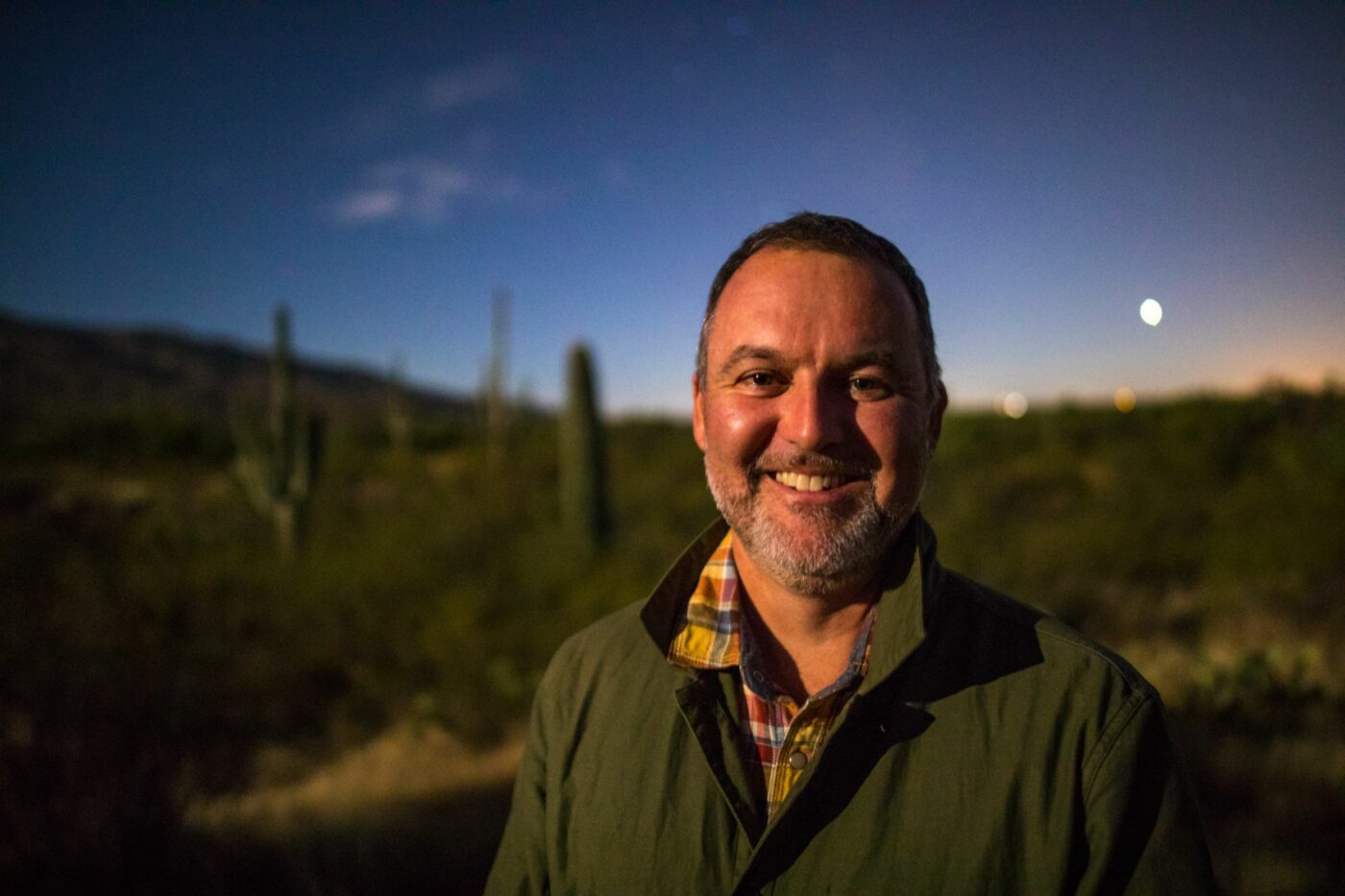
Last but not least, DarkSky‘s approved program provides objective, third-party certification for products, designs, and completed projects that minimize glare, reduce light trespass, and don’t pollute the night sky.
To achieve their goals DarkSky has partnered with different organizations such as CBS, National Geographic, Clear Sky Chart, Globe at Night, Under Canvas, Your True Nature, Selux, and many more. In this way, they have the opportunity to receive support and sponsorship for their programs and events. At the same time, it allows for further world reach and global education.
“DarkSky International strives for and promotes lighting practices that reduce the negative impacts of light pollution on wildlife, biodiversity, climate change, and human health. This recognition from the lighting design community beautifully illustrates the relationship between good lighting design and responsible dark sky-friendly lighting. Through responsible practices and innovative design we can combat the alarming trends of lighting pollution together,” concludes Hartley.
DarkSky’s receipt of the Spotlight Prize at the 2023 LIT Lighting Design Awards speaks volumes about their steadfast commitment to combat light pollution and champion responsible outdoor lighting practices. Their dedication to education, advocacy, and the certification of dark sky places positions them as leaders in the pursuit of sustainable and environmentally responsible lighting solutions. As DarkSky continues to light the way toward a harmonious coexistence of light and nature, this prestigious recognition underscores the crucial link between innovative lighting design and the promotion of responsible, dark-sky-friendly practices.
Text: Polya Pencheva
The prestigious LIT Lighting Design Awards is pleased to announce the recipient of the 2020 Spotlight prize – Women in Lighting.
The LIT Lighting Design Awards was created to recognize the efforts of talented international lighting product designers and lighting implementers. The organization believes lighting is both an art and a science, and that it is one of the most important elements of design. LIT was envisioned to celebrate creativity and innovation in the fields of lighting products and applications.
In the organization’s most recent news, LIT Lighting Design Awards is thrilled to announce its 2020 Spotlight prize – Women in Lighting (WIL). WIL is an inspirational digital platform that profiles women working in the field of lighting design. The community platform promotes each women’s achievements, narrates their career path and goals, celebrates their work, and elevates their profile in the lighting community.
“Spotlight is a special prize that rewards an organization or project which carries out remarkable work for its community, and for being a major contributor in the lighting industry,” says the founder of LIT Lighting Design Awards, Mr. Hossein Farmani. “Women in Lighting exemplifies our expectations for Spotlight, as the project supports the important work of women in the industry by creating an inclusive environment in the profession. We couldn’t be prouder of this initiative and look forward to seeing their continued work into the future.”
Women in Lighting has been founded by Sharon Stammers and Martin Lupton, the team now consists of 70 ambassadors from 70 different countries around the world who aim to create a supportive and inspirational environment for women in the lighting industry.
When being informed of the Spotlight prize, Sharon Stammers shared “The WIL team are proud to accept this special award on behalf of all people who have participated in the project, the entire global WIL network and its supporters. It’s great to have the project recognized in this way as one of the main reasons for starting it were to raise the profile of women in lighting and to inspire others. We feel that this is working…”
Women in Lighting Founders: Sharon Stammers and Martin Lupton
About Women in Lighting
International lighting designers and light activists, Light Collective launched the project, Women in Lighting on International Women’s day in 2019. It is a celebratory project that set out to create an inspirational digital platform for women working in the architectural lighting industry to promote their passion and achievements, narrate their career path and goals, celebrate their work and elevate their profile in the lighting community.
Women in Lighting consists primarily of a website – www.womeninlighting.com – with a database of interviews with women from around the world. Starting with lighting designers, the scope has expanded to include women in all aspects of lighting – education, journalism, manufacturing, art and research. The project has already gathered support from individual female designers in over 70 different countries. These “ambassadors” are a point of contact in each location for other women seeking to find out more about the project. Initially started as it was evident that female participation in conferences, committees, juries and panels were underrepresented, the main aim was that as there are approximately 50% of female lighting designers, they get 50% visibility.
Women in Lighting is not about gender inequality but about inclusivity and how this is beneficial to the profession as a whole. The project is supported by formalighting and archifos.
For more information about Women in Lighting, please visit https://womeninlighting.com.
The Studio School of Design (SSD) is an interdependent community of practice where experiential learning is embedded into a curriculum of design storytelling. It celebrates the full range of human cultural expression and identity and especially supports those who are and have previously been marginalized or excluded from the design professions. They see lighting design as a creative art form and are deeply invested in the potential of telling diverse and inclusive human stories through the medium of light.
The Studio School of Design’s vision is to increase collective knowledge and diversify access to the lighting design field across the places where we work. The school is a 501c3 Not-For-Profit community organization, seeking to provide equitable and inclusive low-cost classes both online and in-person to a wide-ranging pool of talented and motivated students.
This year, the 2022 « Spotlight » prize has been awarded to The Studio School of Design for its engagements towards education accessibility, diversity, and inclusivity. SSD is providing affordable (or free) learning environments and educational programs, preparing emerging lighting designers for the broad range of today’s lighting careers.
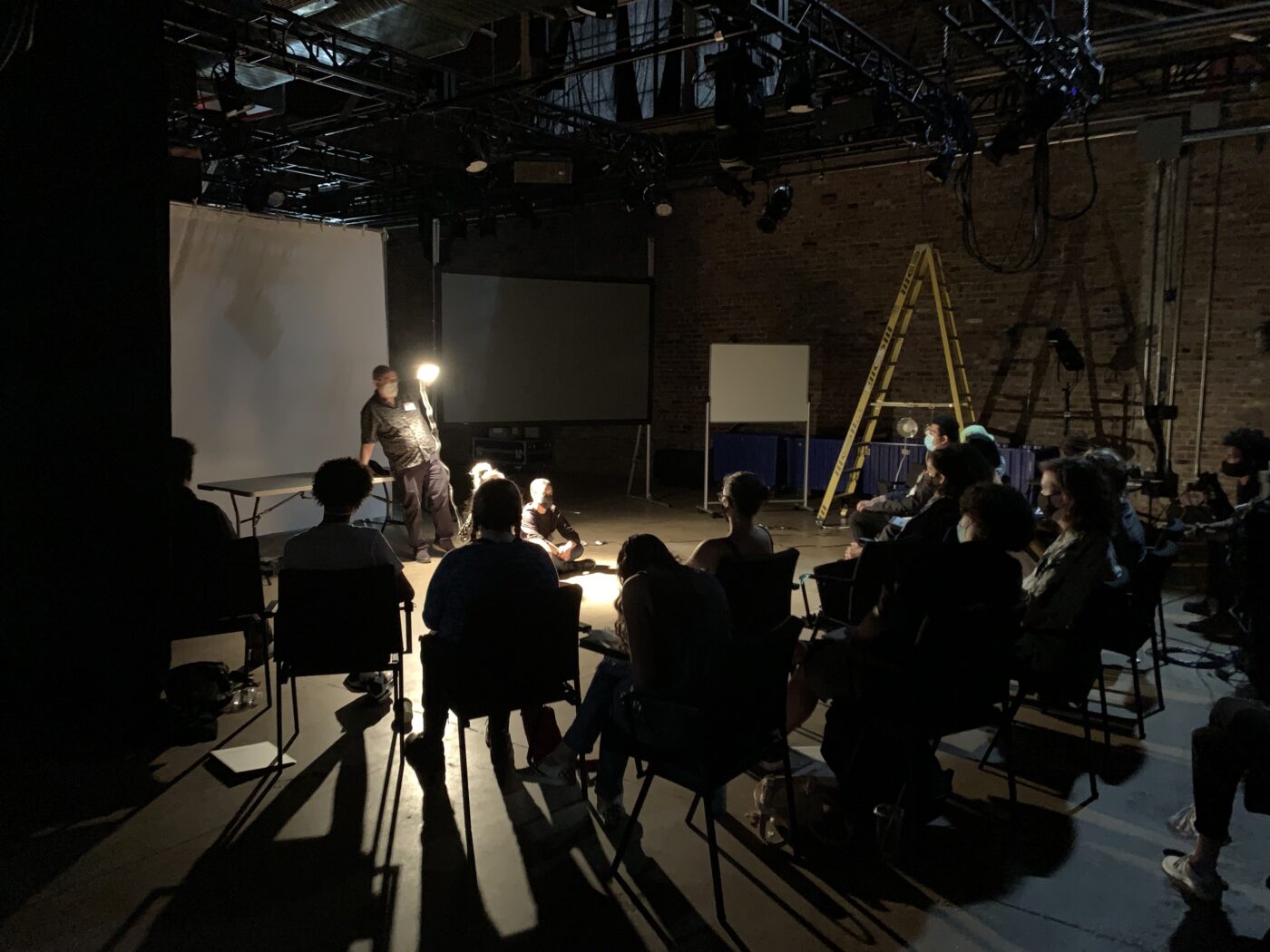
Photo by Rosalie O’Connor
The Studio School of Design began operations in the spring of 2021 with courses in Lighting for the Camera, Business Skills for Freelancers, Assisting with Large Scale Projects, and, importantly, a survey course of all the professions where designers work outside of the traditional theatre markets (65 students from 8 countries). They continued in the fall with courses in Video Content Creation and Pre-Visualization.
Additionally, they have offered free programs such as Pioneers of Light: The History of Women in Lighting Design (attended by over 80 online participants), Color and Light in a Mixed Source World, two Lighting Design Educator workshops for High School and University level instructors, and Networking events, both on Zoom and in person, to facilitate contact between designers, associates, directors, and choreographers. This spring (2023), the Studio School of Design will again offer Bob Barnhart’s highly successful Lighting for the Camera course, as well as courses in Vectorworks 3D and a Dance Lighting Intensive.
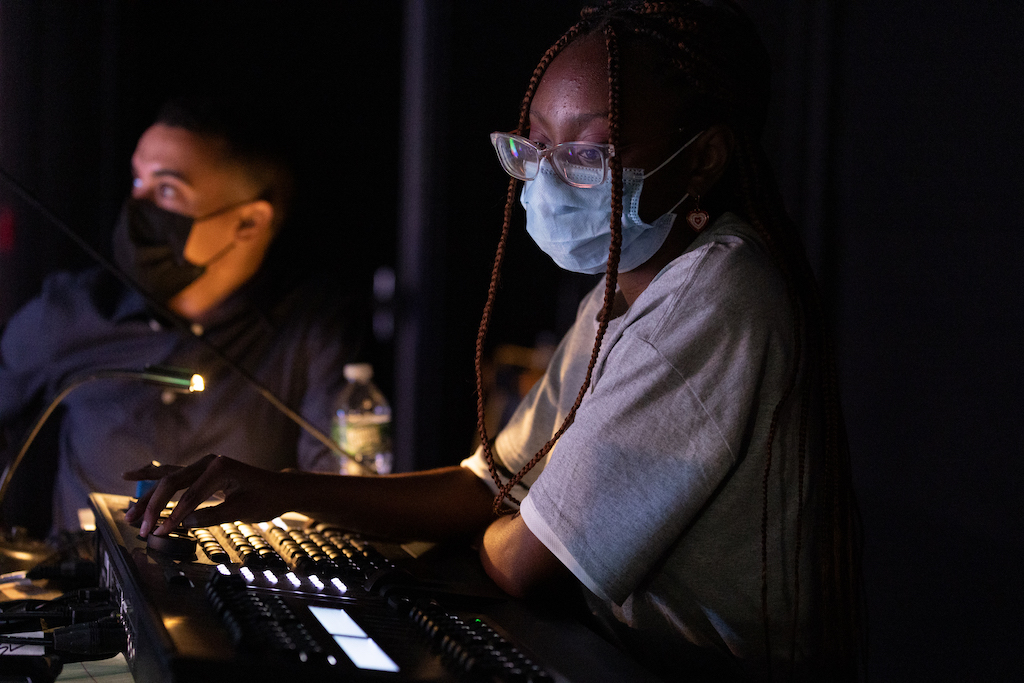
Photo by Rosalie O’Connor
One of their most exciting initiatives has been the launch of our High School Summer Workshop, a pilot program attended by 13 high school students, primarily from underserved school districts, for 4 days in the summer of 2022 (video of Students sharing their experiences). With the support of the Chelsea Factory and other donors, students participated for free in hands-on training in designing and telling stories with light. They are currently in the advanced planning stages for an expanded multi-week program targeting 40 high school students for the summer of 2023.
The Studio School of Design continues to offer online courses through Zoom, making course materials available to a large group of learners from around the world. They will continue to do so in the future and are currently looking for a space in Manhattan where they can offer face-to-face courses on a regular basis. Their future plans include developing a curriculum program that will provide in-depth study in a variety of fields and career paths for lighting designers.
In total, over 200 students/participants have participated in online and face-to-face programs since April 2021; 25% of online participants have received scholarships and all high school participants have attended for free.
The Studio School of Design is led by an outstanding group of individuals who bring decades of experience in education, design, non-profit management, media, equity, diversity, inclusion, law, and the lighting industry. Studio School of Design faculty come from the professional community and are focused on recruiting a wide range of highly qualified professionals.
We spoke with Studio School of Design President Mark Stanley and Vice President Clifton Taylor about their plans for the future of this inclusive and multicultural learning environment.
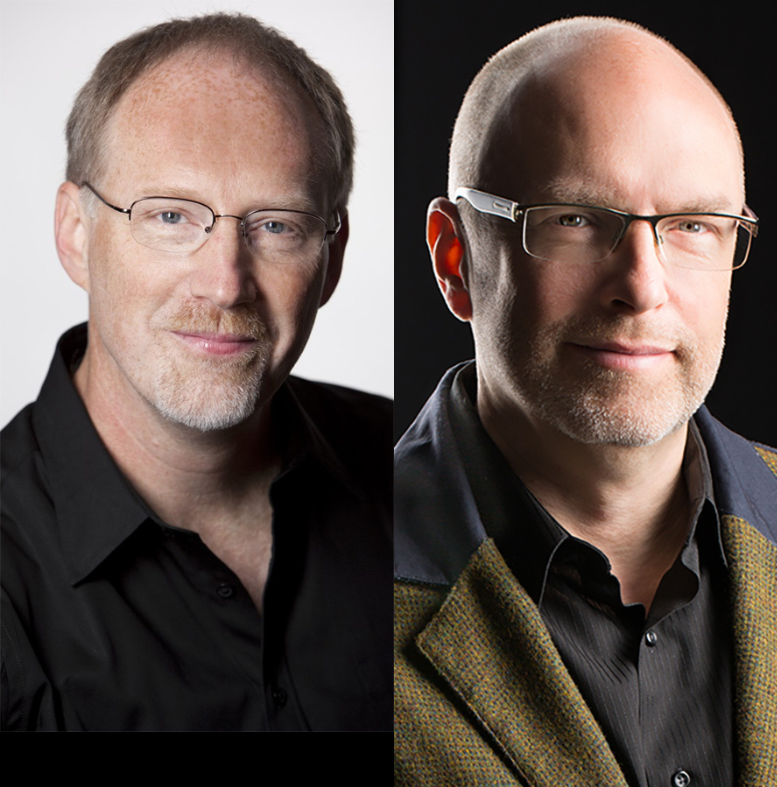
MARK STANLEY – Director, President (Photo by Rosalie O’Connor) and CLIFTON TAYLOR – Director, Vice President, Secretary
“As professional designers and educators, Clifton and I are intimately connected to the intersection of both worlds. Studio School reflects our commitment to providing opportunities for affordable, accessible training in lighting design and related fields. By expanding the pathways to a successful and more diverse, inclusive, education and also providing a gateway to the professional world, we enrich our community and the stories we tell through light and design“, shared Mark Stanley.
Talking about the ways the public and the industry can support their work, Mark added that the “Studio School of Design is a non-profit, tax-exempt organization. We rely on contributions to achieve our mission and provide the affordable, and often free, education that is our mission. As a young organization, we need the larger lighting and design communities’ support in order to expand and grow“.
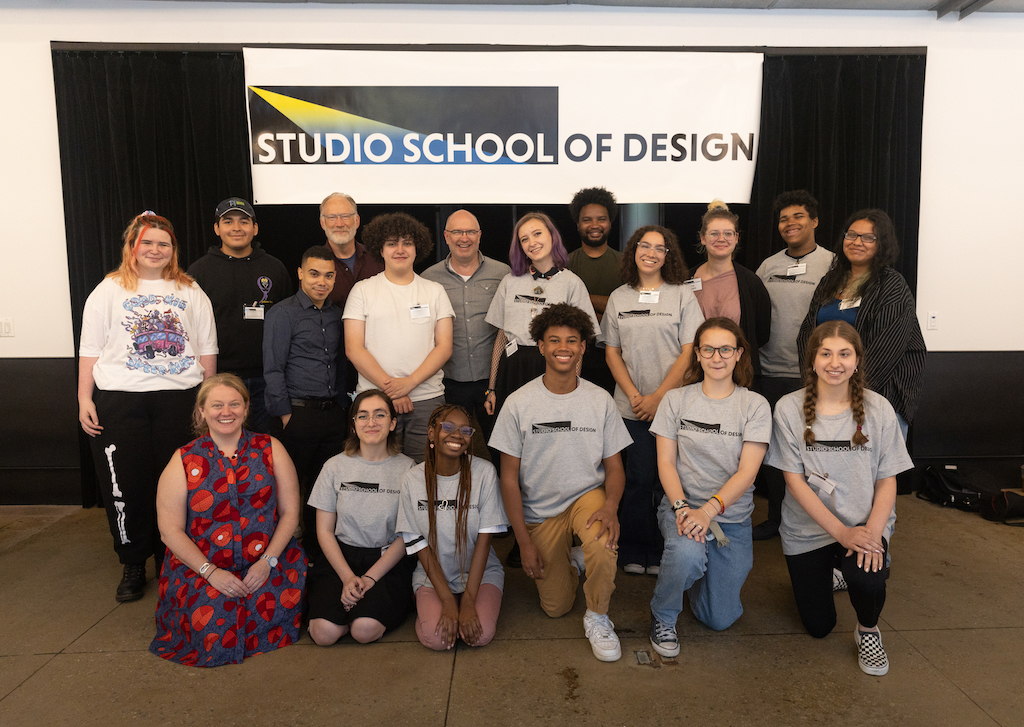
Photo by Rosalie O’Connor
Looking at this coming year’s program, Mark added that “When it comes to their upcoming projects, this spring they are offering 3 courses online: Lighting Live Events for the Camera led by Bob Barnhart, Advanced Vectorworks 3D Drafting, led by Nick Solyom, and a Dance Lighting Intensive, led by Mark Stanley. In addition, Studio School of Design offers networking opportunities and educator training at both the high school and university levels. In the summer of 2023, they will expand their High School Summer Intensive in Lighting Design to a two-week program with the goal of reaching 40 high school students. In addition, they will offer their popular Associates and Assistant Lighting Designer course as well as Business Practices for Freelancers.”
About Mark Stanley: Resident Lighting Designer for New York City Ballet, Mark Stanley has designed over 220 premieres for their repertoire including Paul McCartney’s Ocean’s Kingdom. He has worked with choreographers around the world including Peter Martins, Alexei Ratmansky, Susan Stroman, Christopher Wheeldon, Justin Peck, William Forsythe, Kevin O’Day, Susan Marshall and many others. His designs are in the repertoire of nearly every major ballet company in North America and Europe and his designs for George Balanchine’s The Nutcracker and other ballets and operas have been seen on Live from Lincoln Center and Great Performances. Mr. Stanley previously served as Resident Designer for the New York City Opera. His theatre work includes the Kennedy Center, Long Wharf Theater, Goodspeed Opera House, Ordway Music Theater, Paper Mill Playhouse, Maurice Sendak’s Night Kitchen and off-Broadway. Mr. Stanley heads the Lighting Design Program at Boston University and is on the Board of Directors of the Hemsley Lighting Programs.
About Clifton Taylor: For over 34 years, Clifton Taylor has created lighting, projection and scenic designs for theater, dance and opera companies around the world. He has also designed a number of unique concert music events for major orchestras, solo musicians and large-scale venues. His work has been commissioned on Broadway, Off-Broadway, regionally, and in seventeen countries outside the US. Clifton teaches design as an associate professor at UNCSA with additional extensive experience lecturing at NYU, the New York Choreographic Institute, and LDI. He has also had academic appointments at the Juilliard School, The University of Iowa, and the Royal University of Fine Arts in Phnom Penh Cambodia. He has a long-standing interest in education and is also a current MA candidate in the Adult Education Program at ECU. Clifton is the author of the book on color for lighting designers: “Color and Light, Navigating Color Mixing in the Midst of an LED revolution” which was published by Ones and Zeros Media.
You can learn more about the Studio School of Design at studioschoolofdesign.org.
Los Angeles, CA – The prestigious LIT Lighting Design Awards is pleased to announce the recipient of the 2021 Spotlight prize is “LUCI Association” (Lighting Urban Community International).
The Spotlight Prize has been introduced in 2020 to reward and put the “spotlight” on an organization, association, project, or initiative that carries out remarkable work for its community and has a major contribution to the Lighting Industry.
Created in 2002 at the initiative of the City of Lyon (France), today, LUCI is a non-profit organisation bringing together over 70 member towns and cities worldwide that use light as a tool for social, cultural and economic development. It also includes over 50 associated members from the lighting industry, design agencies and research institutes.
“We are really delighted and honoured to receive the LIT 2021 Spotlight Prize. At LUCI, we strongly believe in city-to-city collaboration, exchange, learning and co-creation to improve urban lighting and quality of life in cities. As LUCI is about to turn 20 years young, this comes at a perfect time to recognize the Association’s contribution to the global urban lighting community!” said Mark Burton-Page, General Director of LUCI.
Through the organisation of international events and conferences, and by piloting lighting projects and research initiatives, LUCI helps cities harness the potential of light to create sustainable and people-focused urban spaces.
AGM Tartu © Annika Hass TAVA – LUCI AGM Tartu © Annika Hass TAVA
What are the core missions of LUCI and how it supports cities :
© L_Oritsland – © City of Rotterdam photo EricFecken
LUCI Association activities, publications and events:
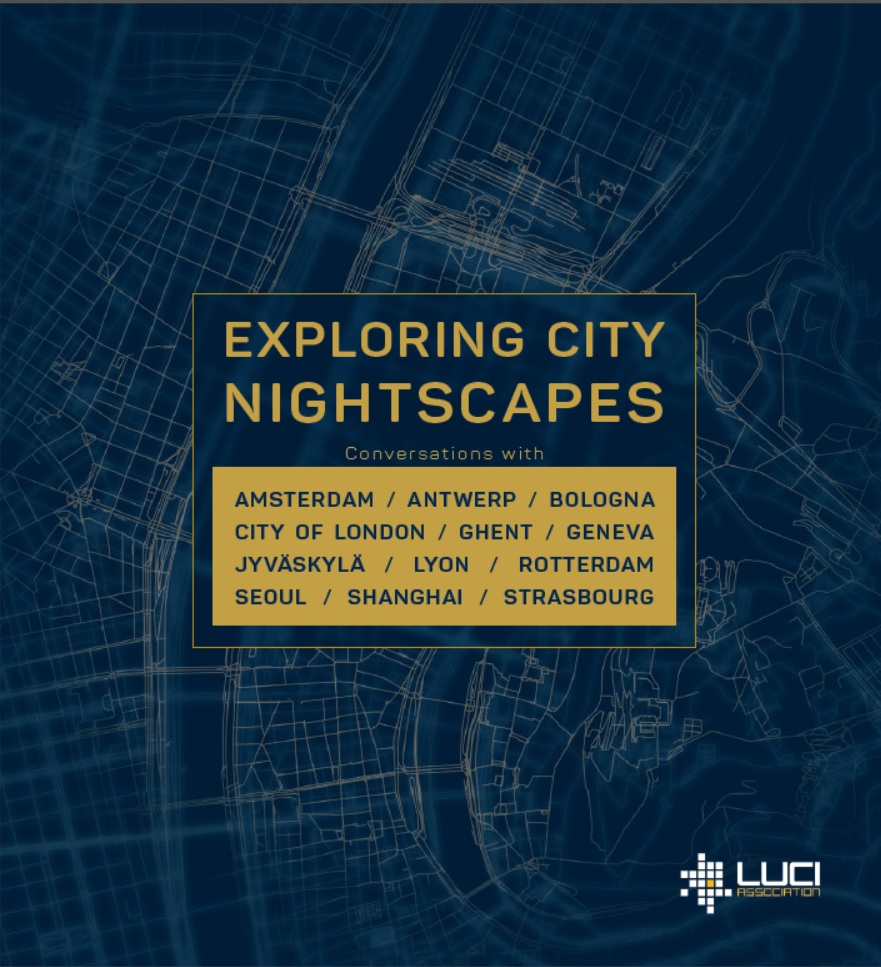 For more information on the LUCI Association please visit the LUCI website and social media accounts: Facebook, LinkedIn and Twitter.
For more information on the LUCI Association please visit the LUCI website and social media accounts: Facebook, LinkedIn and Twitter.